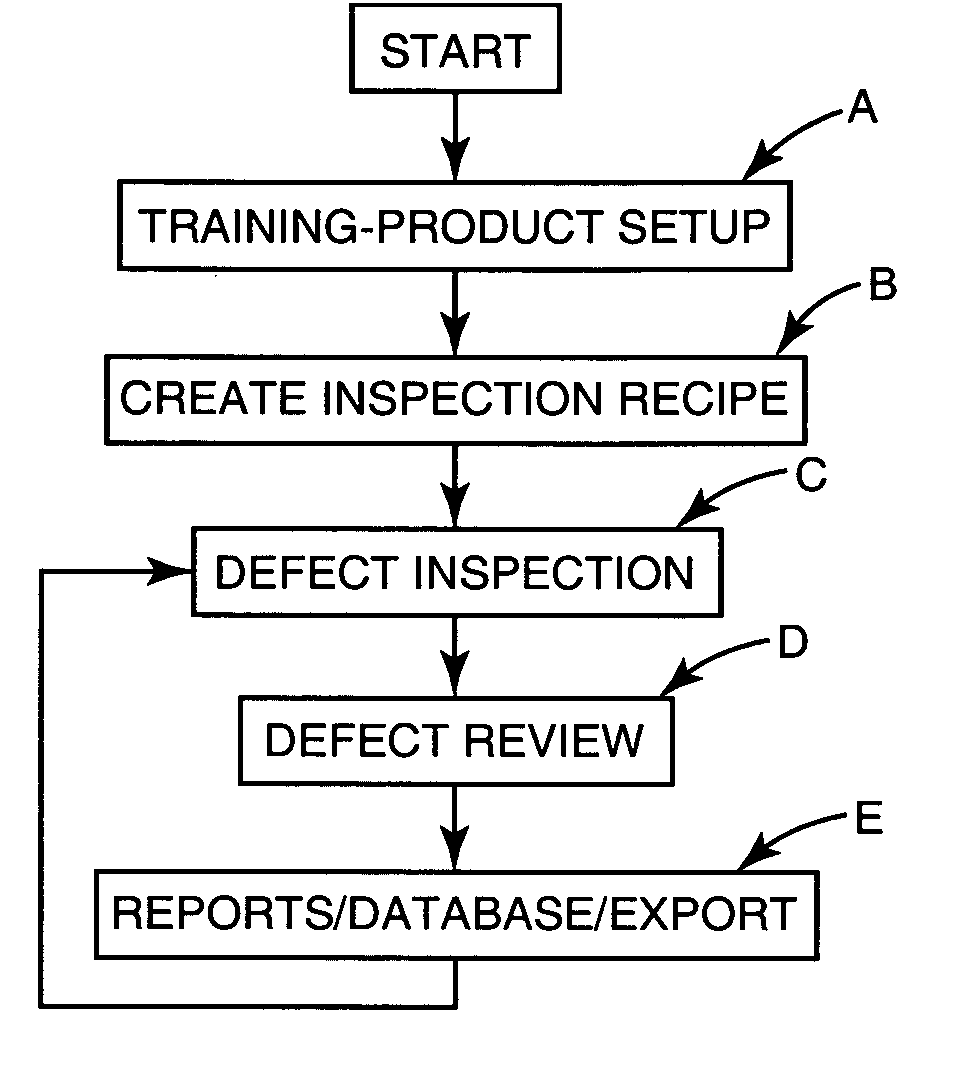Automated wafer defect inspection system and a process of performing such inspection
a defect inspection and automatic technology, applied in semiconductor/solid-state device testing/measurement, image enhancement, instruments, etc., can solve the problems of high equipment and large equipment, expensive and large inspection devices are not cost justifiable for smaller shops, and none of these systems address the particular and unique constraints. , to achieve the effect of improving process control and improving inspection quality
- Summary
- Abstract
- Description
- Claims
- Application Information
AI Technical Summary
Benefits of technology
Problems solved by technology
Method used
Image
Examples
Embodiment Construction
[0075] The automated defect inspection system of the present invention is indicated generally at 10 as is best shown overall in FIGS. 1 and 8 (but in detailed portions in FIGS. 2-7 and 9-21) and is used in one environment to find defects on die on patterned wafers W but is intended for this and other uses including for inspecting whole wafers, sawn wafers, broken wafers, wafers of any kind on film frames, die in gel paks, die in waffle paks, MCMs, JEDEC trays, Auer boats, and other wafer and die package configurations (although hereinafter all of these uses shall be referred to generally as inspection of wafers W). The system inspects for many types of defects including, but not limited to, the following: metalization defects (such as scratches, voids, corrosion, bridging, etc.), diffusion defects, passivation layer defects, scribing defects, glassivation defects, chips and cracks from sawing, probe or bond area defects (such as missing probe marks, discoloration, missing metal and ...
PUM
| Property | Measurement | Unit |
|---|---|---|
| angle | aaaaa | aaaaa |
| angle | aaaaa | aaaaa |
| angle | aaaaa | aaaaa |
Abstract
Description
Claims
Application Information
 Login to View More
Login to View More - R&D
- Intellectual Property
- Life Sciences
- Materials
- Tech Scout
- Unparalleled Data Quality
- Higher Quality Content
- 60% Fewer Hallucinations
Browse by: Latest US Patents, China's latest patents, Technical Efficacy Thesaurus, Application Domain, Technology Topic, Popular Technical Reports.
© 2025 PatSnap. All rights reserved.Legal|Privacy policy|Modern Slavery Act Transparency Statement|Sitemap|About US| Contact US: help@patsnap.com



